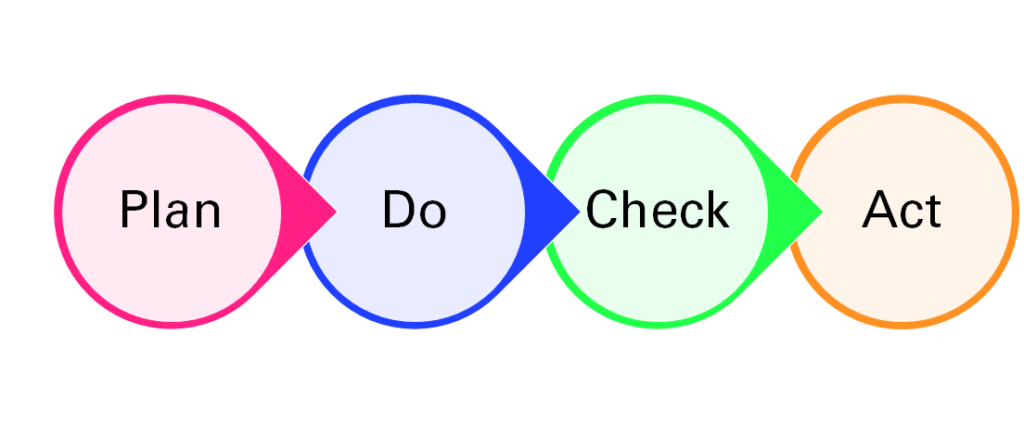In a world filled with uncertainties and challenges, effective problem-solving skills are invaluable. In an earlier post, we learned about ten proven problem techniques. One technique that has stood the test of time and proven its worth is PDCA (Plan-Do-Check-Act). Originally developed by Dr. W. Edwards Deming, PDCA provides a structured framework for problem-solving and continuous improvement. In this blog post, we will explore real-life scenarios where PDCA can be applied and share practical tips to help you become a problem-solving maestro.

Scenario-1: Time Management Woes
Imagine you’re struggling to manage your time efficiently, leading to missed deadlines and increased stress.
Apply PDCA as follows:
Plan: Identify the key areas where you’re losing time, such as excessive social media usage or lack of prioritization. Create a schedule or a to-do list, allocating specific time slots for each task.
Do: Follow the plan diligently, focusing on completing tasks within the allocated time slots. Use time management techniques like the Pomodoro Technique to stay focused and avoid distractions.
Check: Evaluate the effectiveness of your time management plan by monitoring your progress. Are you completing tasks within the scheduled time? Are there any unforeseen challenges?
Act: Based on your evaluation, adjust your time management plan. If you’re not meeting deadlines, consider reallocating time or seeking assistance. Repeat the process until you achieve an efficient time management system.
Tip: Break larger tasks into smaller, manageable chunks. This helps in maintaining focus, boosting productivity, and ensuring timely completion.
Scenario-2: Customer Complaint Resolution
Suppose you’re a customer service representative faced with a recurring complaint from customers regarding a specific product or service.
Utilize PDCA to resolve the issue effectively:
Plan: Gather all relevant information about the complaint and investigate the root cause. Analyze customer feedback, examine the product or service, and identify potential gaps or shortcomings.
Do: Develop a solution based on your findings. It could involve process improvements, product enhancements, or additional training for staff. Implement the changes and communicate them to the concerned parties.
Check: Monitor customer satisfaction and gather feedback after implementing the solution. Have the complaints decreased? Are customers expressing improved satisfaction?
Act: Based on the feedback received, take appropriate action. If the complaint rate has decreased significantly, continue with the implemented solution. Otherwise, refine your approach and iterate until the desired outcome is achieved.
Tip: Actively engage with customers to understand their needs and expectations. This fosters empathy and helps in tailoring solutions that truly address their concerns.
Scenario-3: Team Collaboration Challenges
Suppose you’re leading a project team facing collaboration issues resulting in miscommunication and delays.
Employ PDCA to enhance team collaboration:
Plan: Identify the key areas of collaboration breakdown, such as unclear roles and responsibilities, ineffective communication channels, or lack of accountability. Establish clear guidelines and protocols for team collaboration.
Do: Implement the planned strategies and encourage open communication among team members. Utilize project management tools to streamline communication and enhance transparency.
Check: Monitor the effectiveness of the implemented strategies. Are team members communicating more effectively? Is there a noticeable improvement in task completion and overall productivity?
Act: Based on the feedback and observations, refine your collaboration strategies. Address any remaining challenges and provide additional training or support as necessary.
Tip: Foster a culture of open communication and active listening within the team. Encourage team members to share their ideas and concerns freely, promoting a collaborative environment.
Conclusion: Mastering problem-solving skills is a lifelong journey, and PDCA equips us with a powerful framework to tackle challenges systematically. By applying the Plan-Do-Check-Act method to real-life scenarios like time management, customer complaints, and team collaboration, we can become more effective problem solvers. Remember, the key to success lies in careful planning, taking action, evaluating results, and making continuous improvements. With PDCA as your problem-solving companion, you’ll be well-equipped to navigate the complex landscapes of life and work.